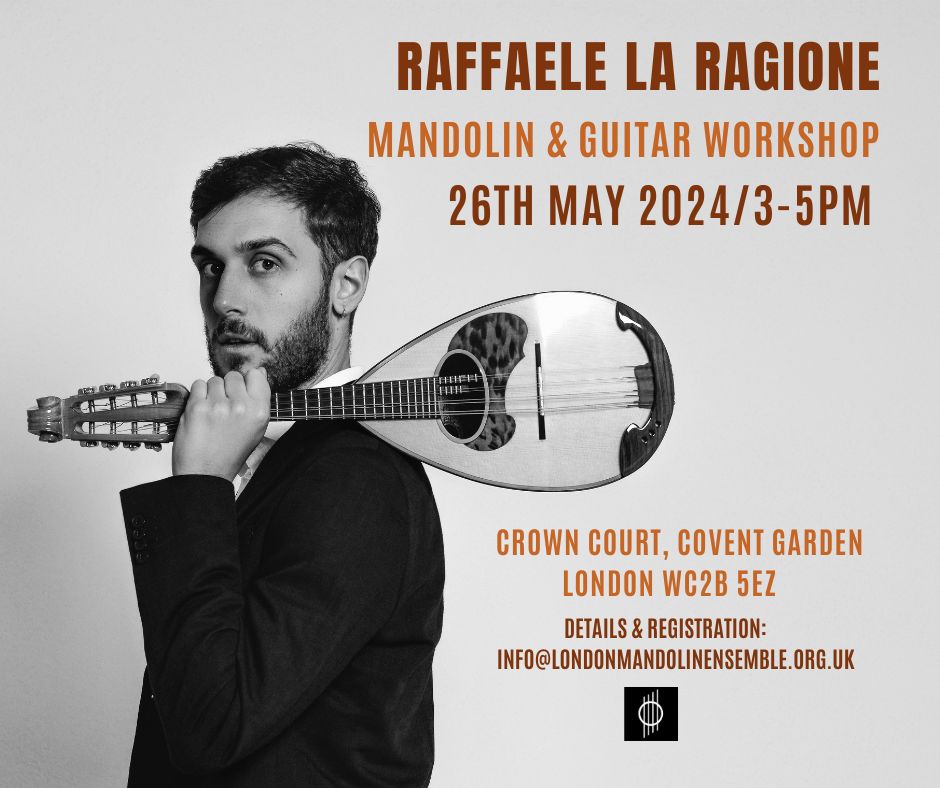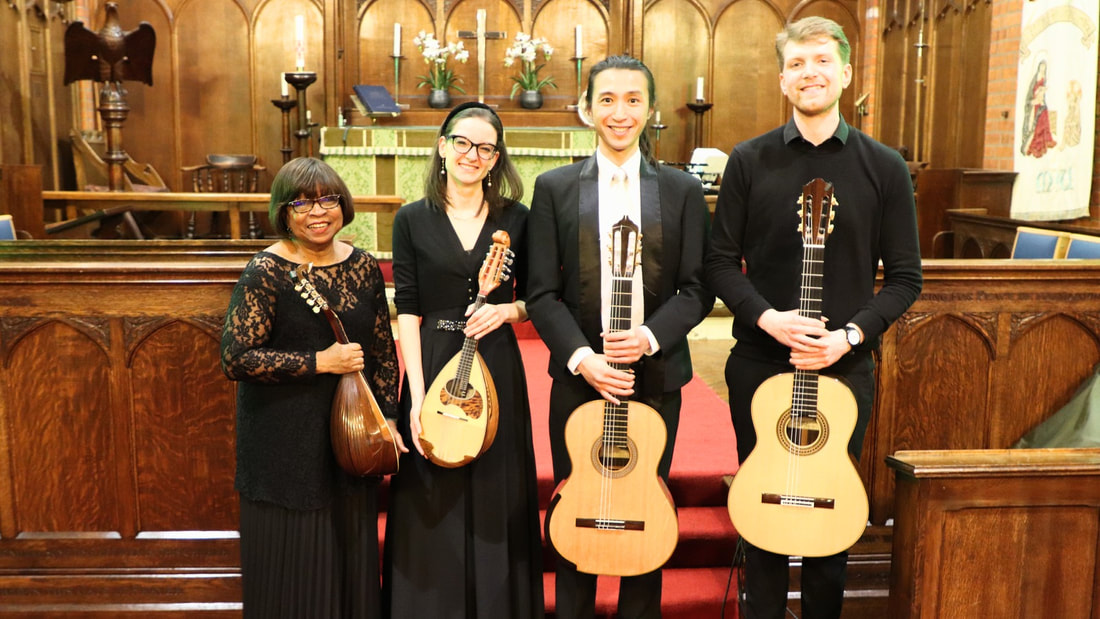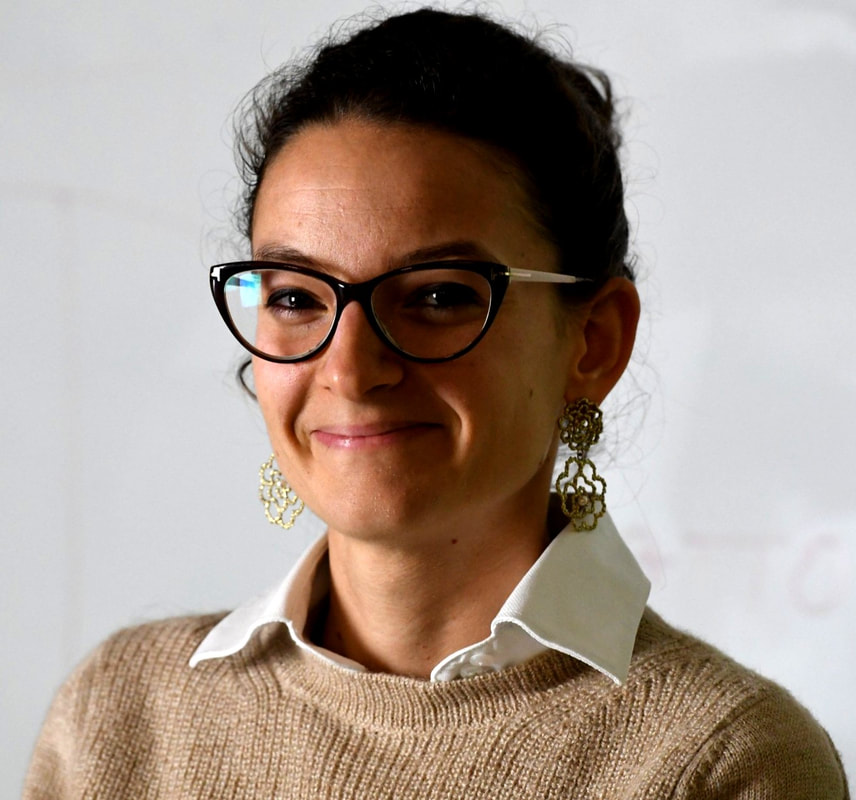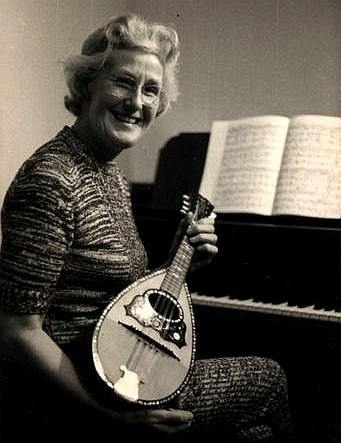|
Mandolin virtuoso Raffaele La Ragione is visiting London for a concert with La Serenissima on Thursday 23rd May at St Martins-in-the-Fields, Trafalgar Square, London. LME seized the opportunity of this visit to arrange a mandolin and guitar workshop with him on Sunday 26th May from 3.00-5.00pm at LME's rehearsal venue, Crown Court Church in Covent Garden, WC2B 5EZ. The workshop is open to mandolinists, mandola players and guitarists, and we look forward to seeing you all there! Information and details about the workshop, along with registration, can be obtained by emailing: [email protected]
0 Comments
Remastered by and with thanks to Fabio Gallucci/The Mandolin World Raffaele Calace (1863 – 1934) was an Italian mandolin player, composer, and luthier. Calace was born in Naples, Italy, the son of Antonio Calace, a successful instrument maker. He initially trained to be a musician, discovered the mandolin, and soon became a virtuoso. After Calace graduated with high honours from the Regio Conservatorio di Musica in Naples, he set out to elevate the mandolin's place in music. To achieve this, he toured Europe and Japan, giving concerts on the Neapolitan mandolin and liuto cantabile. The liuto cantabile is a bass variant of the mandolin family that scholars believe Neapolitan luthiers of the Vinaccia family created in the last decade of the 19th century, and that Raffaele Calace subsequently perfected. Calace made three long-playing phonograph records on which he plays mandolin and liuto cantabile. He wrote about 200 compositions for mandolin. These include concert works for mandolin solo and compositions for mandolin and other instruments—duets with piano, trio combinations with mandola and guitar, the Romantic Mandolin Quartet (two mandolins, mandola, and guitar), and quintets. Calace also wrote pedagogical works, including a mandolin method and a method for playing the liuto cantabile. The mandolin method was published in 1910 and elaborates on the 18th-century Italian mandolin tutors by Giovanni Battista Gervasio (c. 1725–c. 1785), Gabriele Leone (c. 1725–c. 1790) and others. It shows the development of the traditional Italian playing style. The Calace school forms a bridge between other modern methods for mandolin, such as those by Raffaele Calace's countryman Silvio Ranieri (1882-1956), a Roman virtuoso who settled in Brussels, and the American-based Italian mandolinist Giuseppe Pettine (1874-1966). LMQ had a very special concert on 17th February - we were delighted to introduce the mandolin, its history and music to a brand new audience. The Waltham Forest Music Society has a large membership, and does a fantastic job in promoting classical music - they were wonderful hosts, had a full house, and gave us a sparkling review!
“On Friday last, 17th February, the London Mandolin Quartet - Maxine Wiltshire {mandolin}, Anna Lombardi {mandolin}, Chan Yuk Fan, Ryan {guitar} and Tom Smith {guitar} - played to an audience of over 100 concert-goers who had assembled expectantly in All Saints church. Although quartets had featured in previous seasons, this was the first occasion on which such a combination of instruments had been the focus of a WFMS recital. And what a recital it was! The programme of music, carefully-selected under the supervision of the LMQ’s founder, Maxine Wiltshire, to reflect the mandolin’s development across the centuries, ranged from Pachelbel in the 1600s to Sandoval in the present day. The recital fell into two distinct halves, with Baroque music (Boyce, JS Bach, Pachelbel, D. Scarlatti and Vivaldi) played before the interval and music from the 20th century (Hadjidakis, Sandoval, Amadei, Piazzolla and Baumann) after. The sedate first half conjured images of times long past while in the second the sounds we tend to associate with mandolins came to the fore as familiar tremolos immediately created the illusion of having been transported from Highams Park to the coast of the Aegean or Mediterranean. Most of the pieces were special arrangements for mandolin and guitar (e.g. Boyce’s 1st Symphony) while others had been created for this instrumental combination. Special mention must be made of Entre la Sombras by Ricardo Sandoval and Suite Marinaresca by Amadeo Amedei in which the timbres of each instrument blended perfectly. It’s a shame that these pieces aren’t heard more widely and, to my knowledge, neither has been recorded. At various points, Tom spoke about the mandolin’s history while Maxine displayed her selection of antique instruments. These were on show during the interval while the musicians were at hand to chat to the audience, pose for photos and answer questions. The enthusiastic applause which greeted the final notes of Baumann’s Andalusian Serenade clearly demonstrated the audience’s wish for an encore and we weren’t disappointed. Tarantella Piedigrotta by Luigi Ricci brought the evening to a joyful close. In case you missed the recital, or are eager to see them again, London Mandolin Quartet has been booked to appear on July 20th at one of the twice-weekly lunchtime recitals held in St. Olave’s Church, Hart Street, near Tower Hill.“ In 1924 Raffaele Calace embarked on his first trip to Japan, where he was welcomed triumphantly in Tokyo, Osaka, Kyoto and Nagoya. This short and very rare video portrays him in some images taken from that trip. Sebastiaan de Grebber created a second workshop for the Classical Mandolin Society of America Convention 2020. This workshop covered how to practice speed and accuracy on the mandolin, including strategy and exercises. Professional Dutch mandolinist Sebastiaan de Grebber created workshop tutorials for the Classical Mandolin Society of America's online Convention 2020. They are extremely useful for improving tremolo, speed and accuracy and arpeggios. Here is his video tutorial on tremolo: The second episode of Carlo Aonzo's mini-documentary series features the history of the mandolin in the city of Turin. An album of photos and documents used in the making of Episode 2 can be found on Facebook, via this link: https://www.facebook.com/pg/carloaonzomandolin/photos/tab=album&album_id=2935238659886877&ref=page_internal International artist and mandolin virtuoso Carlo Aonzo has created a new mini-documentary series on the history of the mandolin. The series has been well researched, and the episodes contain anecdotes, music, period photos, interviews and video footage, and while the commentary is in Italian, the series will very much appeal to anyone with an interest in the mandolin. We will feature each episode here on our blog, and also on the LME Facebook page. Enjoy Episode 1! We’re delighted to welcome mandolinist Anna Lombardi. Anna comes from a small village in northern Italy, and has been playing the mandolin since she was six years old.
She studied mandolin with Dorina Frati, and played for over 15 years in the ‘Orchestra a plettro Claudio e Mauro Terroni’ under her direction. She’s attended courses and masterclasses and has collaborated with ‘La Verdi’ orchestra in Milan and the ‘Fondazione Orchestra Giovanile L. Cherubini’ in Piacenza, under the direction of Riccardo Muti. She holds a PhD in experimental physics and a Masters in Science Communication and is currently working as a data journalist at The Times of London. Eileen was born ‘Eileen Isolde Faber’, the daughter of civil engineer Oscar Faber OBE and civil servant Helen Mainwaring. The family were keen amateur artists and musicians; Eileen became a proficient pianist and trained as a teacher. In 1938 she spent time as a teacher/missionary in Uganda and in 1947 as a land agent in Zanzibar.
Also in 1947 she married the diplomat and civil servant, Richard Hercules Wingfield Pakenham CBE. Eileen’s parents had moved to Harpenden and she and her husband moved to live with them in 1957 at 25 Rothampsted Avenue. In the mid 1970s, after both parents had died, they moved to a smaller property at 9 Kirkwick Avenue. Eileen had two sons, Richard and John, and when the boys started playing guitar she bought a mandolin from the Luton Music Shop, run by Philip J. Bone. She became friendly with the owner’s daughter, Irene, who also played the mandolin and in 1978 they both joined the London Mandolin Ensemble for which Eileen composed several mandolin orchestral works. As a composer she always remained an amateur, never formally copyrighting her work, but she received much acclaim both locally and internationally as a composer for the mandolin. Her works have been used for examination pieces in Music Schools and performed by groups around the globe from Japan to the USA. She was even mentioned by Alfred Einstein in his book ‘Greatness in Music’. Eileen’s music is quite distinctive in style - typically English of the 1930s, sometimes coloured by the broad, landscape sweep of Vaughan Williams, the humour of Walton’s Facade, or conjuring up a mental image of Miss Joan Hunter-Dunn, but always with a flavour that is distinctly Eileen Pakenham. Taken from an article by Andy Boden. |
The LME blogPlayers, music and plucked strings. Archives
February 2024
Categories |

|
|




 RSS Feed
RSS Feed